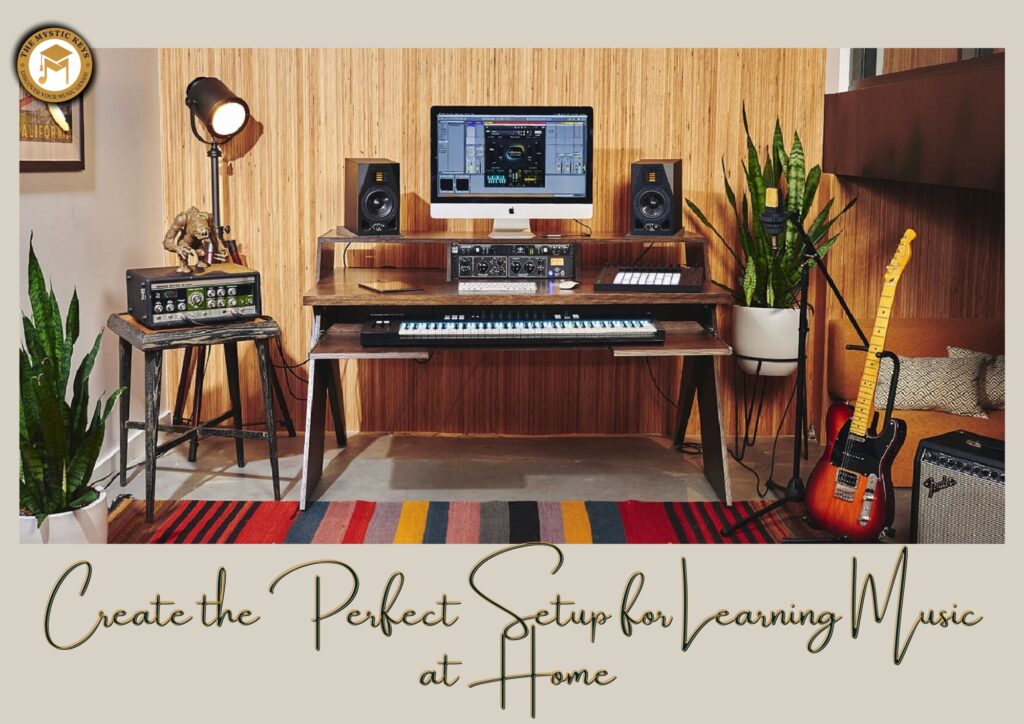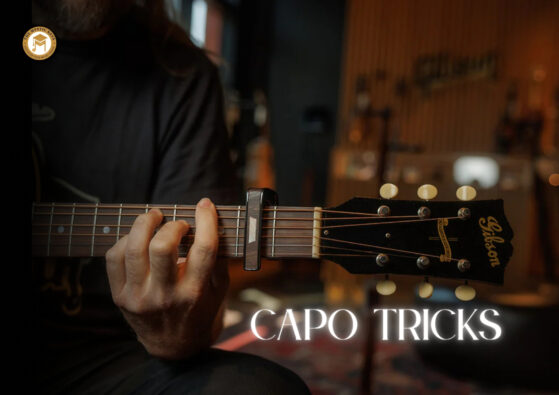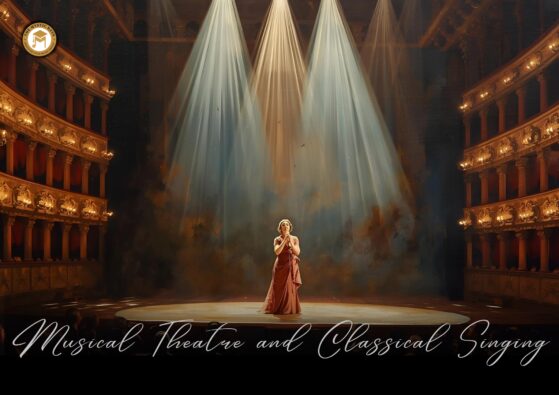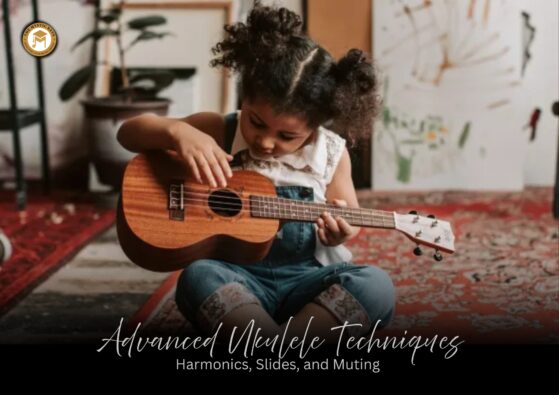How to Create the Perfect Setup for Learning Music at Home
Learning music at home is an exciting and rewarding journey. However, whether you’re a beginner or an advanced musician, having a well-organized and optimized practice space can make all the difference in enhancing your learning experience. Moreover, a dedicated setup not only keeps you motivated but also ensures you have everything you need within reach. With that in mind, this guide will walk you through the essential elements of creating the perfect home music learning setup.
Choosing the Right Space
Find a Dedicated Area
First and foremost, selecting a specific area for practicing music is crucial. A dedicated space not only helps you focus but also minimizes distractions, creating an environment conducive to consistent learning. Ideally, this space should:
- Be free from household noise and disturbances.
- Have good natural or artificial lighting.
- Offer enough room to move comfortably with your instrument.
B. Consider Sound Isolation
Additionally, music practice can be loud, so sound isolation is key to preventing disturbances to others. Here are a few strategies to manage sound:
- Consider using rugs, curtains, or foam panels to absorb sound.
- If possible, choose a room with carpets and bookshelves to naturally dampen noise.
- Opt for headphones or a silent practice mode (for digital instruments) when necessary.

Selecting the Right Equipment
Instrument-Specific Setup
The equipment you choose will vary based on the instrument you’re learning. Below are the essential items for several popular instruments:
For Pianists and Keyboard Players:
- A full-sized 88-key digital piano or keyboard, ideally with weighted keys for a more authentic feel.
- A sturdy keyboard stand and an adjustable bench to maintain proper posture during long sessions.
- A sustain pedal to enhance the expressiveness of your playing.
- Headphones, perfect for quiet practice and focused learning.
For Guitarists:
- Choose between an acoustic or electric guitar based on your musical preference and style.
- A comfortable chair without armrests, ensuring ease of movement while playing.
- A guitar stand or wall mount for convenient storage and easy access.
- An amplifier and cables, which are essential for electric guitars to enhance sound.
- A tuner and capo, vital for tuning and exploring different musical keys.
For Vocalists:
- A high-quality microphone (USB or XLR) for clear vocal recordings and online lessons.
- A pop filter to minimize plosive sounds and improve vocal clarity.
- A music stand to hold your lyrics or sheet music while you sing.
- A mirror, helping you monitor posture and facial expressions for better performance.
For Other Instruments (Violin, Flute, Drums, etc.):
- A suitable music stand to hold sheet music at the correct angle for easy reading.
- Maintenance tools such as rosin for violin players or drumsticks for percussionists.
- A tuner and metronome to ensure accurate tuning and rhythmic consistency during practice.

Optimizing Acoustics and Sound Quality
Improving the acoustics of your practice space can significantly enhance sound quality, making your sessions more productive. Here’s how you can achieve this:
A. Reducing Echo and Noise
- Firstly, consider using acoustic foam panels or soundproofing blankets on the walls.
- Additionally, placing a rug or carpet on hard floors helps absorb sound reflections.
- Moreover, position speakers or instruments away from walls to improve sound distribution.
B. Using Headphones and Monitors
- For digital instruments, opt for high-quality headphones to avoid disturbing others.
- Furthermore, when recording, choose studio monitors over regular speakers to ensure accurate sound reproduction.
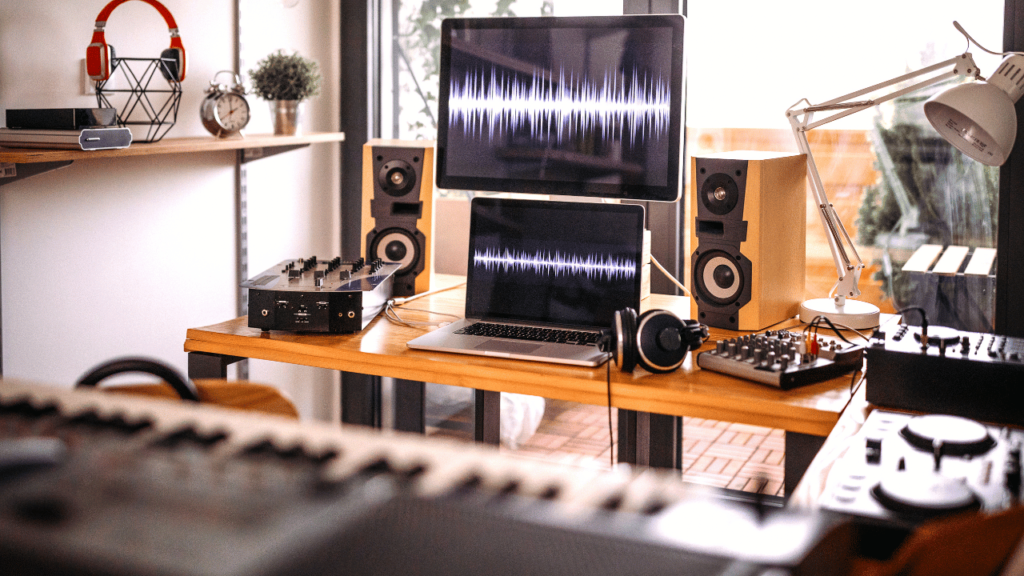
Organizing Your Practice Materials
A. Storing Sheet Music and Books
To begin with, use a bookshelf or filing cabinet to keep sheet music and books well-organized. Alternatively, you might want to consider digital sheet music apps, such as forScore or MuseScore, for quick and easy access.
B. Essential Tools for Practice
In addition, there are several essential tools for effective practice. First, a metronome is crucial for maintaining proper timing and improving rhythm. Furthermore, a tuner is invaluable for ensuring your instrument remains in tune. Lastly, having a recording device, such as a simple microphone or audio interface, will help you track and assess your progress.
C. Music Notation Software
When it comes to composing and arranging music, utilizing software like Finale, Sibelius, or MuseScore can greatly enhance your workflow and creativity.
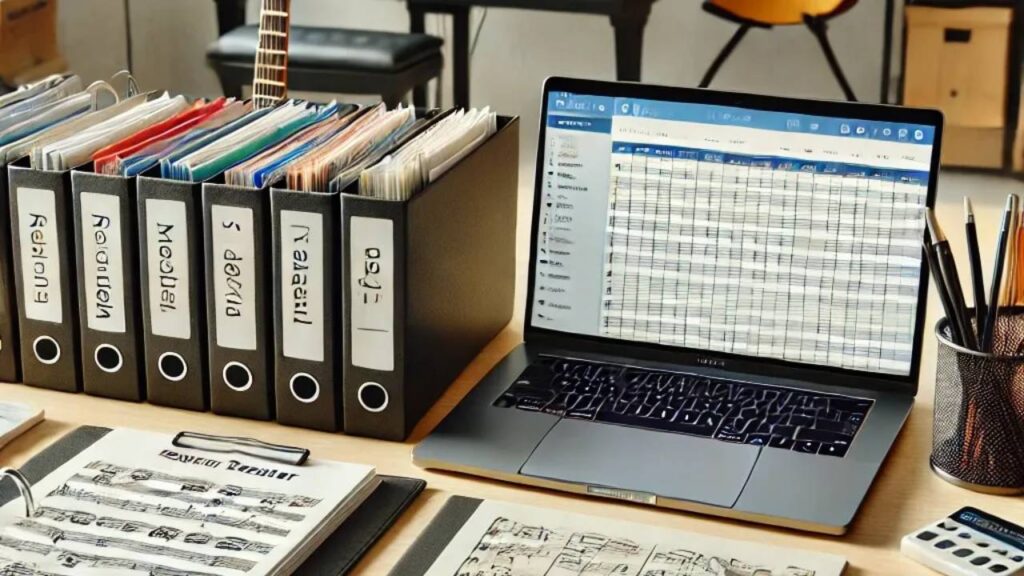
Leveraging Technology for Learning
A. Online Lessons and Courses
The internet offers a vast range of learning opportunities. Some great platforms include:
The Mystic Keys – Comprehensive online lessons for various instruments.
YouTube for free tutorials and masterclasses.
B. Music Learning Apps
Yousician – Interactive learning for guitar, piano, and singing.
Simply Piano – A great app for beginners learning the piano.
Perfect Ear – Helps with ear training and pitch recognition.
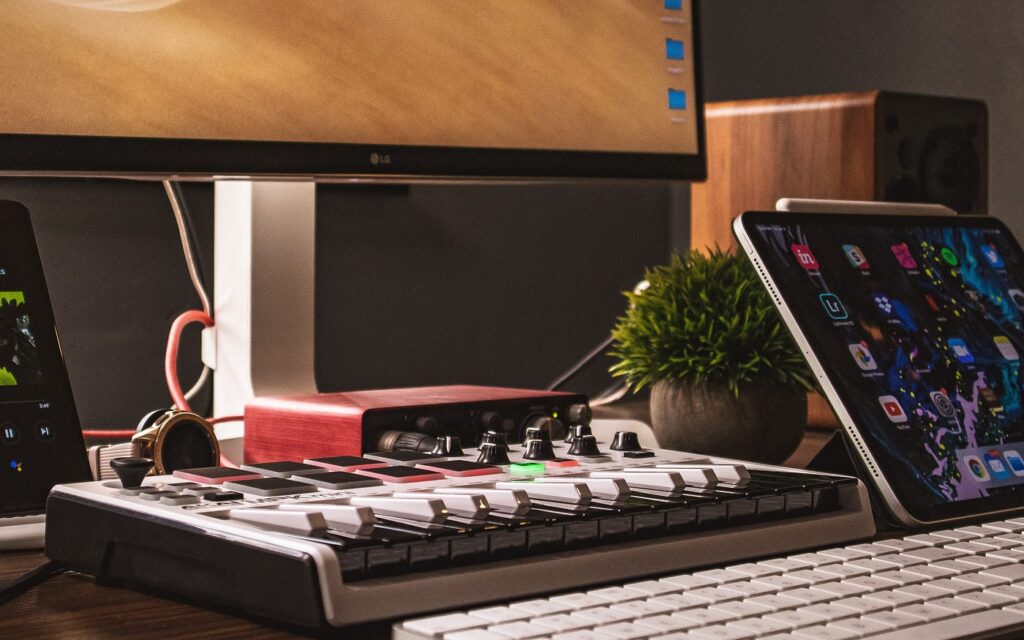
Establishing a Routine
A. Setting Practice Goals
To begin with, define what you want to achieve each week, such as mastering a chord progression or improving vocal control.
Furthermore, break down larger goals into smaller, manageable tasks, which will make them more achievable.
B. Scheduling Practice Sessions
Next, make sure to stick to a consistent practice schedule, whether it’s 30-60 minutes daily.
Moreover, use a planner or digital calendar to set reminders, ensuring that you stay on track.
C. Tracking Progress
Additionally, record your practice sessions so you can monitor your improvement.
Finally, keep a practice journal to reflect on what worked well and identify areas for improvement.
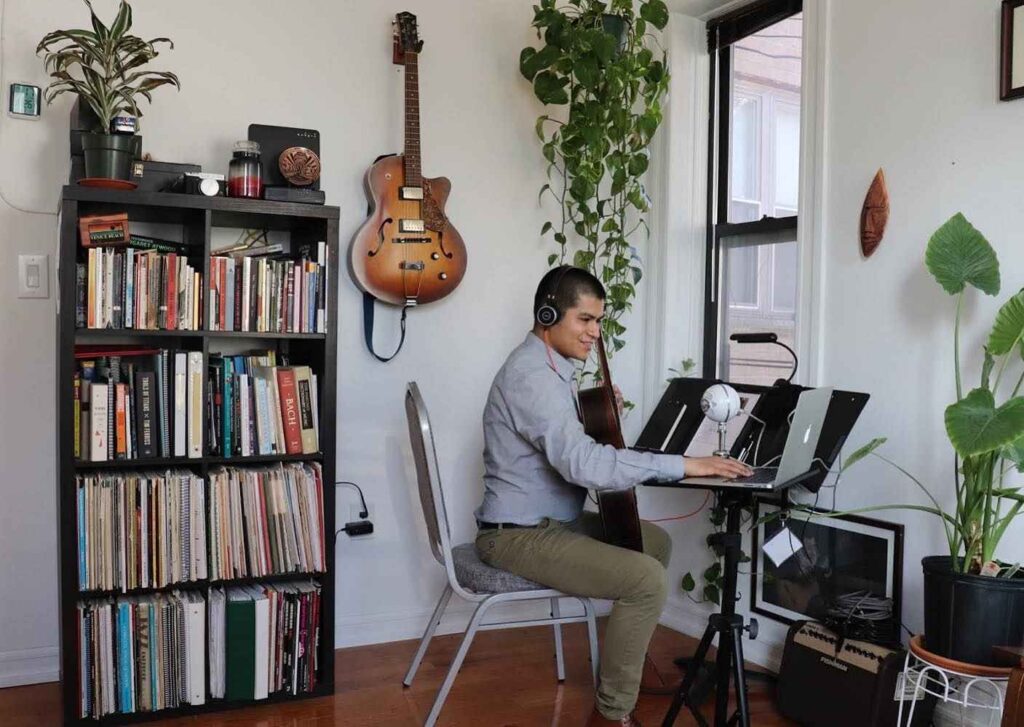
Creating an Inspiring Atmosphere
A. Personalizing Your Space
- To begin with, decorate with music posters, inspirational quotes, or memorabilia to reflect your personal style.
- Moreover, use warm lighting or LED strips to create a comfortable ambiance, which can significantly boost your creativity.
B. Keeping the Space Organized
- In order to maintain focus and productivity, it’s essential to declutter regularly and keep your workspace tidy.
- Additionally, make use of cable organizers to ensure that instrument and audio cables are neat, preventing any distractions.
C. Staying Motivated
- As a next step, join online music communities to connect with others for support and inspiration.
- Furthermore, make sure to reward yourself after achieving milestones, as this can help you stay engaged and committed to your musical journey.

Final Thoughts
Creating the perfect home setup for learning music is about more than just equipment—it’s about crafting an environment that fosters growth, focus, and inspiration. With the right tools, structured learning, and a dedicated space, your musical journey at home can be both enjoyable and productive.
If you’re looking for structured lessons, The Mystic Keys offers expert-led online courses to help you master your instrument. Start today and elevate your music learning experience!


